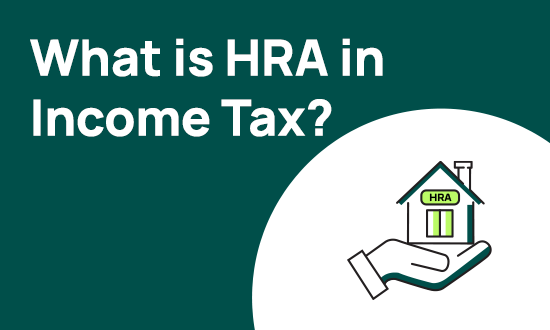What is HRA in Income Tax? A Complete Guide to House Rent Allowance and Tax Benefits


House Rent Allowance (HRA) is an essential part of a salaried individual's compensation package, designed to help employees manage their rental expenses. It not only provides financial support for housing but also offers significant tax benefits under the Income Tax Act. The exemption on HRA depends on factors like salary, rent paid, and city of residence, with metro cities allowing a higher deduction.
To claim the tax benefit, employees must provide rent receipts, and, in some cases, the landlord's PAN if the annual rent exceeds ₹1 lakh. By utilising HRA effectively, individuals can reduce their taxable income and maximise their savings.
House Rent Allowance (HRA) is the money your employer gives you as part of your salary to help cover your rent. If you live in a rented house, you can also save tax on a part of this amount.
HRA is taxed as part of your salary income, but if you live in a rented house, you can claim a tax exemption on it under Section 10(13A) of the Income Tax Act. This means you can reduce your taxable income by the amount of HRA that qualifies for exemption.
But if you choose the new tax regime, you won't be eligible for this exemption. If you are not living in a rented place, the entire HRA amount becomes taxable.
To calculate your HRA exemption, you need to compare the following three amounts and choose the lowest:
The amount you get from these three calculations is the HRA exemption you can claim.
You can claim tax benefits on HRA if:
The tax-free part of HRA is the lowest of these three:
Yes, you can claim both HRA exemption and home loan interest deduction under certain circumstances. Here's how it works in two situations:
If you are living with your parents but receive HRA, you can still claim it under the following conditions:
Even if you don’t receive HRA from your employer, you can still claim a deduction under Section 80GG of the Income Tax Act, provided you meet certain conditions:
This Article is for information purpose only. The views expressed in this Article do not necessarily constitute the views of Kotak Mahindra Bank Ltd. (“Bank”) or its employees. The Bank makes no warranty of any kind with respect to the completeness or accuracy of the material and articles contained in this Article. The information contained in this Article is sourced from empaneled external experts for the benefit of the customers and it does not constitute legal advice from the Bank. The Bank, its directors, employees and the contributors shall not be responsible or liable for any damage or loss resulting from or arising due to reliance on or use of any information contained herein.